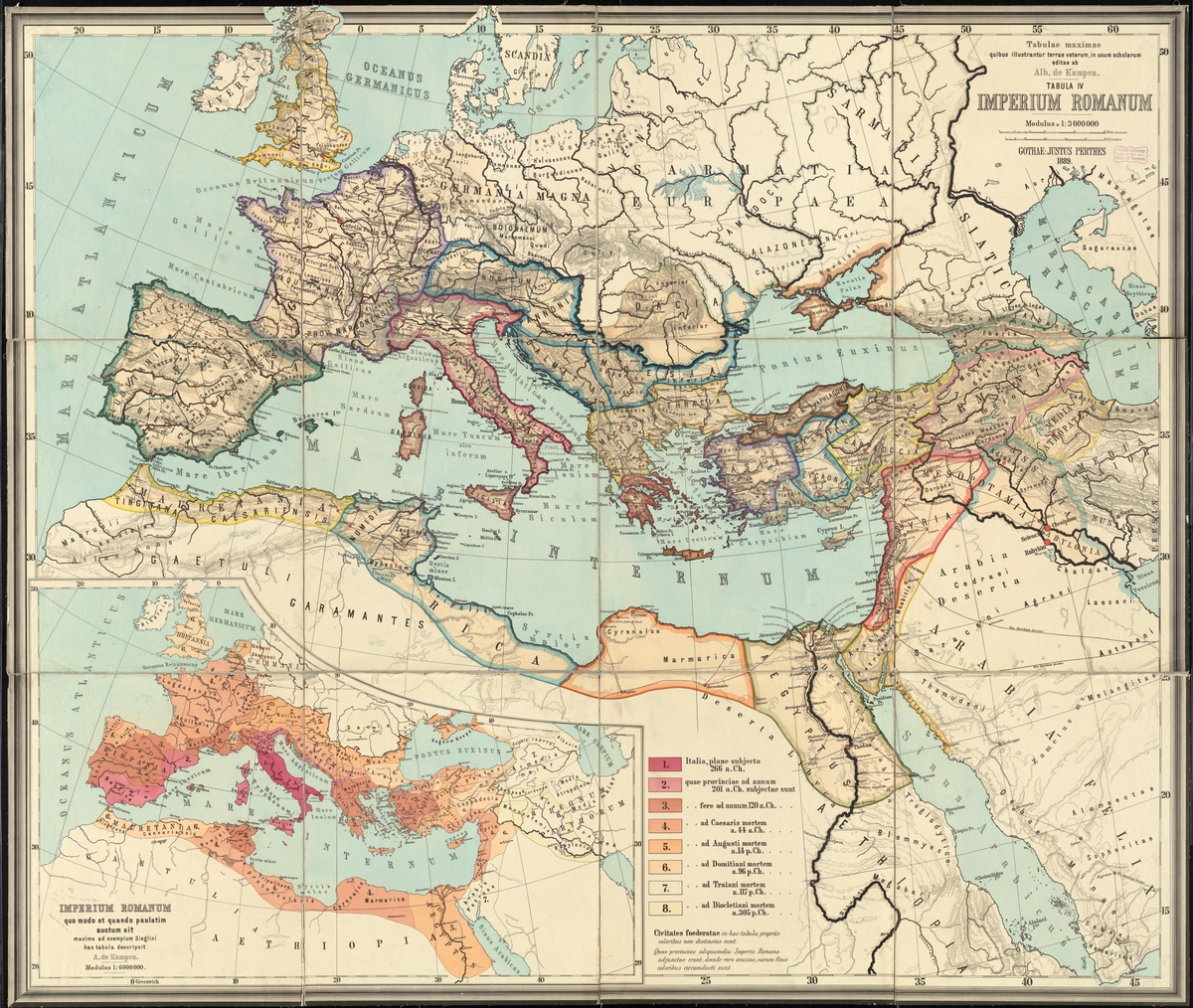Introduction
Few empires in history have left as profound an imprint on human civilization as the Roman Empire. From its legendary founding in 753 BCE to its fall in 476 CE (in the West) and survival as Byzantium in the East, Rome defined politics, law, warfare, and culture for over a millennium.
Rome’s journey — from a small city-state on the banks of the Tiber to a vast empire spanning three continents — is a story of ambition, resilience, and transformation. Its rise to dominance and eventual collapse continue to fascinate historians and offer lessons for our own age.
From Kingdom to Republic
According to legend, Rome was founded by Romulus and Remus, twin brothers raised by a she-wolf. Historically, early Rome was a monarchy until the Romans overthrew their kings around 509 BCE, establishing the Roman Republic.
- The Republic (509–27 BCE): Rome was governed by elected magistrates, the Senate, and assemblies. This system balanced aristocratic and popular interests but also sowed seeds of conflict.
- Expansion: Through alliances and wars, Rome gradually dominated Italy, defeating rivals like the Etruscans, Samnites, and eventually the powerful city of Carthage during the Punic Wars.
- Carthage: The destruction of Carthage in 146 BCE left Rome the dominant power in the Mediterranean.
The Republic built its empire through discipline, infrastructure, and the adaptability of its legions.
Crisis and Transformation
By the 1st century BCE, the Republic was strained by inequality, political violence, and ambitious generals.
- Social Struggles: Wealthy elites amassed land, while soldiers and farmers suffered.
- Civil Wars: Figures like Marius, Sulla, Pompey, and Julius Caesar turned armies into personal instruments of power.
- Caesar: His crossing of the Rubicon in 49 BCE marked the end of the Republic. Though assassinated in 44 BCE, his rise paved the way for monarchy.
In 27 BCE, Caesar’s adopted heir, Octavian (Augustus), became Rome’s first emperor, marking the birth of the Roman Empire.
The Roman Empire at Its Height
Under the emperors, Rome entered its golden age.
- Pax Romana (27 BCE – 180 CE): Two centuries of relative peace, prosperity, and expansion.
- Territory: Rome stretched from Britain to Egypt, from Spain to Mesopotamia.
- Infrastructure: Roads, aqueducts, and amphitheaters connected and entertained the empire.
- Law: Roman legal principles, codified over centuries, still influence modern systems.
- Culture: Latin literature (Virgil, Cicero, Seneca), architecture (Colosseum, Pantheon), and art flourished.
At its peak under Trajan (98–117 CE), Rome ruled over 60 million people.
Society and Daily Life
Life in Rome varied dramatically by class:
- Elites: Senators and equestrians held wealth and influence.
- Plebeians: The majority of citizens worked as artisans, traders, or small farmers.
- Slaves: Formed a crucial labor force, often war captives, though manumission was possible.
- Women: Though excluded from politics, women managed households and sometimes wielded behind-the-scenes influence.
Entertainment was central: gladiatorial games, chariot races, and public baths shaped urban culture.
Religion and Transformation
Religion was a cornerstone of Roman identity.
- Traditional Beliefs: Romans worshipped a pantheon of gods (Jupiter, Mars, Venus) alongside household deities.
- Imperial Cult: Emperors were often deified, reinforcing loyalty to the state.
- Christianity: Emerging in the 1st century CE, Christianity spread despite persecution. By the 4th century, Emperor Constantine legalized it, and it eventually became the empire’s dominant faith.
This religious shift fundamentally reshaped Rome and laid the groundwork for medieval Christendom.
Challenges and Decline
From the 3rd century onward, Rome faced mounting crises:
- Military Pressure: Invasions from Germanic tribes, Persians, and later Huns.
- Economic Strains: Inflation, overreliance on slave labor, and disrupted trade.
- Political Instability: Frequent assassinations and civil wars weakened the state.
- Division: Emperor Diocletian split the empire into East and West (285 CE), a temporary solution with long-term consequences.
In 476 CE, the last Western emperor, Romulus Augustulus, was deposed. The Western Roman Empire collapsed, while the Eastern Roman Empire (Byzantium) endured for another thousand years.
The Legacy of Rome
Though Rome fell, its influence never disappeared:
- Law: Concepts like “innocent until proven guilty” stem from Roman jurisprudence.
- Language: Latin evolved into the Romance languages (Spanish, French, Italian, Portuguese, Romanian).
- Architecture: Domes, arches, and concrete construction shaped Western architecture.
- Government: Republican ideals inspired the U.S. Constitution and modern democracies.
- Culture: Roman myths, literature, and philosophy remain cornerstones of Western heritage.
Rome lives on in our institutions, our cities, and our imagination.
Conclusion
The Roman Empire’s story is one of ambition, brilliance, and fragility. From Republic to Empire, from Augustus to Constantine, Rome’s rise reshaped the ancient world and its fall reshaped the medieval one.
Rome reminds us that empires are built on vision and discipline but undone by division and excess. Yet its legacy — law, language, culture, and ideals — ensures that Rome never truly fell.
